Learnings from TASAH-funded Dry Cow Consults
Finola McCoy MVB MSc, CellCheck Programme Manager, Animal Health Ireland (AHI) and Liam Doyle MVB MSc PhD, Johne’s Disease Programme Manager, AHI, provide an overview of the preliminary findings from analysis of all five years (2019-2023) of the CellCheck Dry Cow Consult to date
The CellCheck Dry Cow Consult (DCC) was originally developed by the CellCheck Technical Working Group, to enable farmers to engage with their nominated vet to develop farm-specific, selective dry cow therapy (SDCT) plans, where appropriate. The DCC was first piloted in 2018, and has been available annually since. The consult is delivered as part of the Targeted Advisory Service on Animal Health (TASAH) funded through the Irish Rural Development Plan 2014-2022 (Department of Agriculture, 2017), and the funding covers the cost of three hours of the trained vet’s time.
Objectives
The main objectives of the consult are to facilitate engagement between the farmer and their vet and to enable farmers to maximise the success of drying off and the dry period. A further objective is to support a move away from blanket dry cow therapy. As the consult was developed and delivered several years in advance of regulatory change to dry cow therapy, this additional objective allowed effective engagement with farmers who were already in a good position to start this change. In other words, they had the necessary information to progress, as well as an indication of good mastitis control on farm. In order to identify the farms potentially capable of adopting a selective drying off strategy, the following eligibility criteria were established:
- an average bulk milk tank somatic cell count (SCC) for the previous 12 months of 200,000 cells/ml or less; and,
- at least four whole-herd milk recordings in the previous 12 months.
In the initial years of the consult, farms were required to be members of HerdPlus; however, this criterion was removed in 2022. TASAH training was developed and delivered by AHI to veterinary practitioners, who, on completion, were then eligible to carry out the consults. To date, more than 500 private veterinary practitioners (PVPs) have completed CellCheck Dry Cow Consult training.
There are four key areas to the framework of the consult, as follows:
- observing the current drying off routine or process;
- discussing and assessing the dry cow management;
- discussing/assessing ICBF and farm records to determine overall udder health performance;
- drawing up an “Agreed Treatment Plan”, if appropriate.
Having assessed and discussed the risks associated with not using blanket dry cow therapy, the farmer and PVP can propose a plan for mitigating those risks, where necessary. The individual cow milk recording results, available from the ICBF database, along with clinical mastitis and other farm records, are used to identify animals suitable for receiving teat seal only at drying off.
Farmers availing of the TASAH service are expected to adopt the following practices:
- ensure that the last milk recording was completed less than four weeks previous to the time of the DCC;
- record the date of drying off and product used for all cows at the end of the lactation;
- commence milk recording within the first two months of the following lactation;
- following the consult, record any clinical mastitis cases thereafter on ICBF, by SMS or the Animal Events page.
Herds that completed a DCC were invited to register for a Dry Cow Review the following year, for which there were no eligibility criteria. This provided an opportunity for the PVP and the farmer to review the success of the drying off and dry period following last year’s consult.
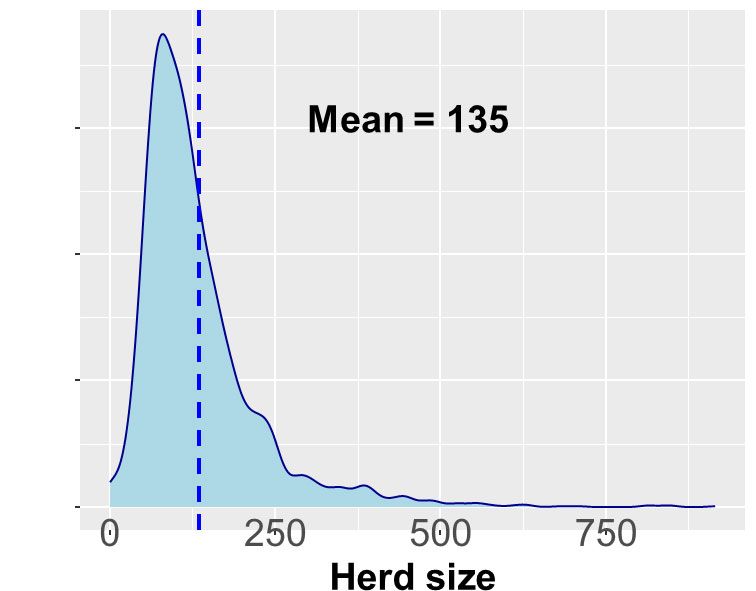
Figure 1: Distribution of herd sizes, 2018-2023.
Preliminary findings
The outcomes for herds that participated in 2019 and 2020 were presented in an earlier publication (Caballero-Villalobos et al., 2024). This current article presents the preliminary findings from analysis of all five years of the consult to date. This presents a unique opportunity to understand the uptake of selective dry cow therapy in a larger population of Irish farms, to observe changes in behaviours and/or udder health over time, and to assess if sustained engagement with their veterinary professionals offered additional benefits or results. At a cow level, this work also looks at the udder health outcomes and if these outcomes are influenced by treatment type at drying off. It should be noted that this and other work would suggest notable herd variation in udder health outcomes.
1,359 herds have participated in DCC and reviews since 2018, with a total of 2,499 consults or reviews completed over that time (Table 1). Of these, 709 herds completed one consult only, while 650 herds completed a consult and one or more reviews in the following year(s) (Table 2).
Whole-herd milk recording results, which included individual animal SCC for the last recording before drying-off and the first recording of the following lactation, were available for participating herds for analysis. Days in milk (DIM) at the first milk recording of the lactation after the consult was also included. Dry cow treatment records in this dataset were available via ICBF, provided the information had been uploaded by the farmer. This data entry could have been made directly by the farmer to the ICBF platform or it could have been inputted via a farm software package and then uploaded to ICBF. As 2018 was a pilot year with only 22 participants, the following findings relate to the years 2019-2023, unless stated otherwise.
Data was available and analysed for 1,356 unique herds, which included 337,608 animals. Of these, 202,351 animals met the criteria of having a last recording before drying off, as well as a first recording within 60 days of calving. Over the five years of application of the DCC, 78 per cent of first recordings after calving were within 60 days of calving. The mean herd size of participating herds was 135 cows (Figure 1).
In 2019, 66 per cent of animals had no drying off treatment data uploaded, which decreased to 43 per cent in 2023. The proportion of animals known to have received teat sealer only at drying off increased from eight per cent in 2019 to 13 per cent in 2023. A small proportion of animals each year (one to three per cent) were recorded as not receiving any treatment at drying off (Figure 2).
Using the study dataset, we categorised the dry period (SCC at the last milk recording before drying off and the first recording after calving, required to be within 60 days) by both the year of the study (2018-2023) (Figure 3) and treatment type (Figure 4). With both these categorisations, it was observed that the SCC decreased during the dry period.

Table 1: Number of participating herds each year, 2018-2023.

Table 2: Number of times each herd participated, 2018-2023.

Figure 2: Proportion of dry cow treatment types, 2019-2023.
New infection rate
In this work, we also investigated new infection rate (NIR), i.e., the proportion of cows that had an SCC of 200,000 cells/ml or less on their last recording before drying off and an SCC greater than 200,000 cells/ml at the first recording within 60 days of calving. NIR was marginally higher in cows receiving teat seal only at drying off (12.7 per cent), compared to 9.7 per cent in cows receiving both antibiotic and teat seal at drying off (Figure 5).
Cure rate, i.e., the proportion of cows that had an SCC greater than 200,000 cells/ml on their last recording before drying off and an SCC of 200,000 cells/ml or less at the first recording within 60 days of calving, was 79 per cent in animals dried off with antibiotic and teat seal, and 75 per cent in animals dried off with teat seal only (Figure 6). While the numbers of animals in this latter group were small, it is an observation worthy of note that farmers opted to use teat seal only at drying off in cows with a high probability of at least one infected quarter, i.e., SCC >200,000 cells/ml, and that three-quarters of the cows to which this method was applied satisfied the definition of cure rate over the dry period.
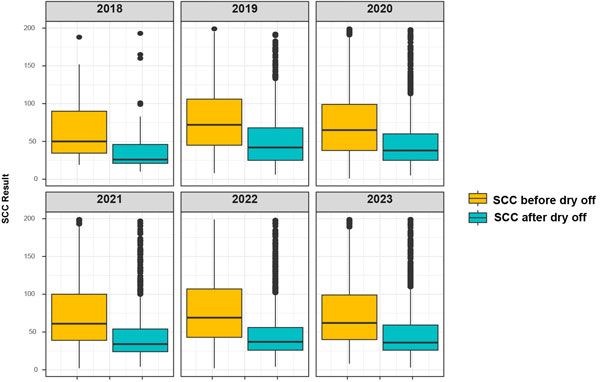
Figure 3: Individual cow somatic cell count (SCC) before and after drying off, 2018-2023.
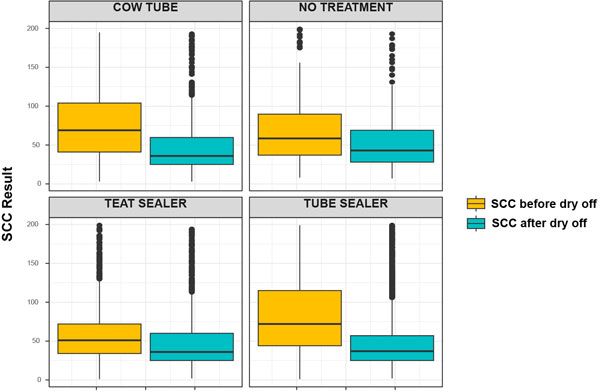
Figure 4: Individual cow somatic cell count (SCC) before and after drying off, by treatment type.
Selective Dry Cow Therapy uptake over time
We also looked at the uptake of selective dry cow therapy over time. The proportion of participating herds that recorded using teat seal only in any of their cows increased from 45 per cent in 2019 to 57 per cent in 2023. This could be a reflection of an increase in the uptake of selective dry cow therapy, or an improvement in the quality of treatment records something which requires further analysis to differentiate.
While these analyses have identified some interesting findings, they also raise some further questions. These analyses have been carried out at an individual cow level, and further analysis at a herd level will be important. Previous studies (Clabby et al, 2022) have shown that there can be considerable variation between herds in the udder health outcomes when a selective drying off strategy is adopted. The previous analysis carried out by Caballero-Villalobos et al also identified cow factors such as parity and SCC before drying off, as well as herd size, as risk factors for new infection over the dry period. It will be interesting to see if we identify these same factors in the larger dataset.
While not presented in the 2024 publication, we know that the earlier work by Caballero-Villalobos et al also identified the phenomenon of ‘self-cure’ over the dry period, i.e., cows having an SCC >200,000 cells/ml at their last recording before drying off, treated with teat sealant only at drying off, and then presenting with an SCC of 200,000 cells/ml or less at their first recording within 60 days of calving. It would be interesting to explore potential factors associated with this ‘self-cure’ such as parity or dry period duration.
Another question yet to be explored is: if sustained engagement with a veterinary professional offers any additional or measurable benefits, e.g., is there any difference between ‘consult’ and ‘review’ herds in terms of udder health and/or uptake of selective dry cow therapy?
Interestingly in this study, while between 8 and 13 per cent of cows were dried off with teat sealant only, when an individual cow SCC threshold of 100,000 cells/ml was applied, the proportion of animals each year that were potentially eligible for drying off with teat sealer only, was between 45 and 47 per cent. While this is likely an overestimate of the animals suitable (as individual cow SCC is only one factor to consider, and we did not have robust clinical mastitis records to also consider) it would suggest that there is still plenty of scope to increase the proportion of animals receiving teat sealant only at drying off.
At a recent CellCheck conference for service providers there was plenty of robust discussion about the “correct” SCC threshold to use, when identifying which cows need antibiotic treatment at the end of lactation. Internationally, no two countries use the same threshold. The CellCheck Farm Guidelines suggest that cows with an SCC never exceeding 100,000 cells/ml and no clinical mastitis can be dried off with teat seal alone, while recent Teagasc research suggests an SCC of 67,000 cells/ml as the preferred cut-off.
The key point is that the lower the threshold, the more uninfected animals we ‘treat’ unnecessarily and the more antibiotic we use. With a higher threshold, there is a possibility that we will miss (i.e., not treat) some cows with infection, but use less antibiotics overall. An important practical element which must always be considered is a good drying off procedure which prevents the introduction of bacteria into the quarter at drying off, or over the dry period.
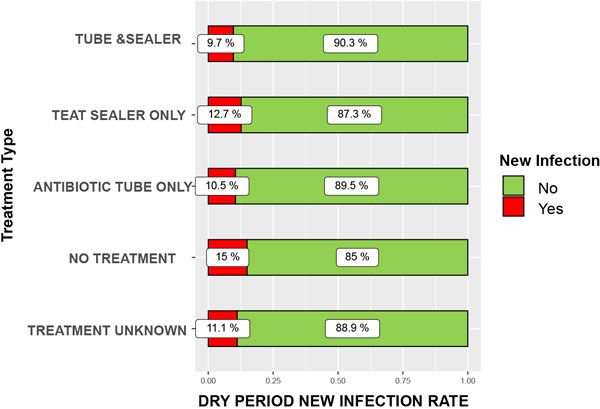
Figure 5: Dry period new infection rate, by treatment type.
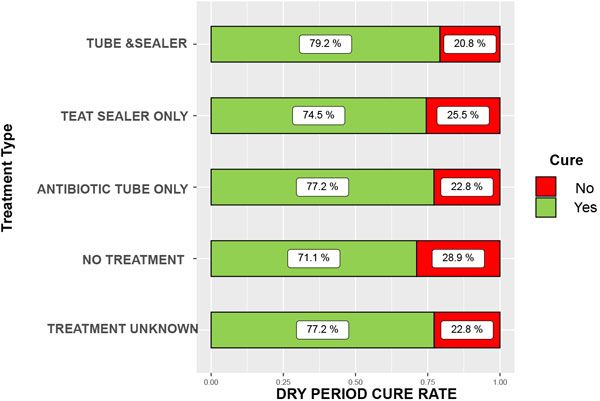
Figure 6: Dry period cure rate, by treatment type.
Caballero-Villalobos, J., Ryan, E. G., McGrath, M., O’Grady, L., McAloon, C. G., Graham, D. A., & McCoy, F. (2024). Udder health outcomes in Irish herds participating in CellCheck dry cow consults. Journal of Dairy Science, 107(10), 8387–8401. https://doi.org/10.3168/JDS.2024-24751
Clabby, C., McParland, S., Dillon, P., Arkins, S., Flynn, J., Murphy, J., & Boloña, P. S. (2022). Internal teat sealants alone or in combination with antibiotics at dry-off – the effect on udder health in dairy cows in five commercial herds. Animal, 16(2). https://doi.org/10.1016/j.animal.2021.100449
1. The objectives of the consult were:
A. To facilitate engagement between the farmer and their vet
B. To enable farmers to maximise the success of the drying off and dry period
C. To support a move away from blanket dry cow therapy
D. All of the above
2. Which of the following statements is true?
A. The mean individual cow SCC was the same before and after drying off
B. The mean individual cow SCC was lower the following lactation, only in animals that were treated with antibiotic and teat sealant at drying off
C. The mean individual cow SCC decreased over the dry period, regardless of dry cow treatment type
D. The mean individual cow SCC was higher the following lactation in animals dried off with teat seal only
3. In this study, dry period new infection rate was:
A. Marginally higher in animals that got antibiotic and teat sealant at drying off than in animals that were dried off with antibiotic only
B. Marginally higher in animals dried off with teat sealant only than in animals that got no treatment at all
C. Marginally higher in animals dried off with teat sealant only than in animals that received antibiotic and teat sealant at drying off
D. Marginally lower in animals that got antibiotic only at drying off, than in animals that were dried off with antibiotic and teat seal
4. Which of the following is the correct SCC threshold to use, when identifying cows for antibiotic treatment at the end of lactation?
A. 67,000 cells/ml
B. 100,000 cells/ml
C. 200,000 cells/ml
D. There is no perfect answer!
ANSWERS: 1D; 2C; 3C; 4D.
















